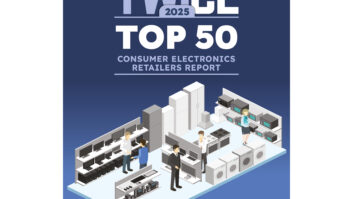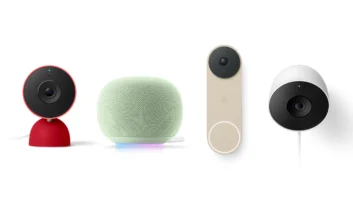With innovation advancing at an ever-accelerating rate, TWICE tapped tech experts and global analysts to get their read on which trends will most impact CE and appliance retailers this year.
Among the dizzying array of developments, our virtual panel picked AR and VR; the growth of third-party seller platforms; the integration of online selling and content; robo vacs; shop-by-voice; AI and machine learning; DIY; and omnichannel integration among the top game-changers in 2017.
Here’s what our futurists had to say:
Sterling Hawkins, operations and venture relations, Center for Advancing Retail &Technology (CART)
The digital brick-and-mortar store hits prime time: We’ll see a growing number of in-store analytic tools move from testing and pilots to more widespread implementation as they are integrated to real-time, in-store marketing capabilities.
In-store goes online: Augmented reality will make its way into consumer packaged goods (CPG) and supermarket retail as the tech is used to provide rich, supplemental information and experiences for shoppers. Virtual reality pilots providing an immersive in-store experience will also grow.
Alexa and Siri become new retail customers: Home-based digital assistants like Amazon’s Alexa and Apple’s Siri will proliferate and expand into e-commerce, enabling consumers to “shop by voice.” These assistants will also spread outside the home as the ecosystems expand into automobiles (witness Amazon integrating Alexa into Ford, BMW and Hyundai cars) and a growing number of other devices.
IoT hits a tipping point: There’s been a lot of talk about IoT for both in-home and in-store applications, but this will be the year that IoT hits critical mass with a fast-growing number of solutions and applications across the retail and home environments
AI to make sense of it: Data and channel proliferation will require more artificial intelligence (AI) and machine learning tools to make sense of all the data and give human operators relevant information they can take action on.
Nick McLean, CEO, OrderDynamics
Personalized commerce and customer engagement: As retailers implement loyalty and smart customer relationship management (CRM) programs this year, personalization will be at the forefront of their strategies. Customers are expecting to be treated as someone special and retailers need to be able to treat each customer accordingly, making each feel like a VIP. This will, in many cases, simply come down to making the experience as personal as possible.
But retailers also need to know who is not their best customer, and will start to identify customers making a lot of returns who may abuse promotions or discounts, and will be less aggressively promotional to that group.
Omnichannel visibility gains momentum: To keep up with Amazon’s pressures, not just in commerce but in the supply chain, retailers will be investing in omnichannel solutions that provide complete inventory visibility across the enterprise, eliminating the channel silos of years past and allowing them to provide far better customer experiences.
They’ll be able to give customers any fulfillment option they want; will start leveraging their physical stores as distribution centers; and will manage returns much more efficiently. All of this will allow customers to shop and receive goods how they want, when they want, and boost business outcomes across the board.
Leveraging order management systems for merchandising strategy: As retailers try to anticipate how much stock to put in each physical location, they often rely on point-of-sale (POS) data from past seasons. But POS doesn’t necessarily tell you the full story of a true omnichannel business. Inbound and outbound logistics processes will start to provide much better operational insights when data is harvested more from order management systems (OMS) than POS systems.
Jamie Ko, head of consumer appliances, Euromonitor International
Consumer appliances: Health and convenience will be two keywords for consumer appliances this year and beyond. The biggest growth will come from robotic vacuum cleaners and slow juicers. Despite these two products’ unit prices being more expensive, consumers will be willing to pay for them to enjoy their benefits.
Jenn Markey, marketing VP, 360pi
Curated vs. sweeping sales as retailers move away from traditional shopping holidays: With more and more large retailers seeking to create their own shopping holidays, like Amazon’s Prime Day and Alibaba’s Single’s Day, and with micro-shopping events accelerating in popularity, retailers are arming themselves with a promotions-based lens into the overall market, capturing insight into who is discounting what, for how much, and on which key micro-shopping dates.
Investing in competitive analysis allows retailers to establish strategies that not only make the customer happy, but also position them appropriately in the market. Knowing when and where to be aggressive on price is critical at all times, and promotional seasons don’t change that reality.
Blurring of video, content placement and shopping: The key to unlocking e-commerce’s potential is the ability to reinvent the customer experience online. With online customer unable to touch and feel products, many retailers are turning to video. And taking it one step further, Amazon is leveraging video to improve upon the overall customer experience, ideally over the store.
For example, Amazon has furthered its apparel ambitions with fashion shows delivered by video. And, like other Amazon tactics to showcase specific products (best sellers for example), the company is increasingly favoring its own private-label brands where possible.
Since video offers the perfect opportunity for product placement, a next logical step would be for Amazon to merge its original content video and private-label products into a virtual experience for shoppers to buy. Essentially, they are looking at developing a next-generation version of what Wayfair announced — a partnership with A+E Networks to sell every item that appears within “The Way Home,” a lifestyle and home improvement show.
The dawn of the Golden Era of the online marketplace: Marketplace sellers account for 96.2 percent of all products offered on Amazon, but half of all merchandise sold on Amazon’s site now comes from these third-party sellers. This allows Amazon to capitalize on high-volume items with strong margins, while allowing third parties to assume the risk on less popular items and keep consumers confident in their ability to get their product from Amazon’s website.
Similarly, Walmart’s recent $3.3 billion acquisition of Jet.com underscores how strategic Walmart deems its marketplace to be to the company’s future. Walmart clearly intends to broaden its online assortment, appeal to more third-party sellers and accelerate its stated goal of adding 1 million products a month to its digital shelf.
Pavel Marceux, households specialist, Euromonitor International
Households: This year, more millennials, or Generation Y kids, will be staying in their parental households than in previous generations, as rising real estate prices, steep costs of higher education and rising indebtedness is encouraging them to cut costs and remain in the familial home. This trend will drive opportunities in household refurbishments and do-it-yourself products as parents look to adapt their home to grown-up children.













